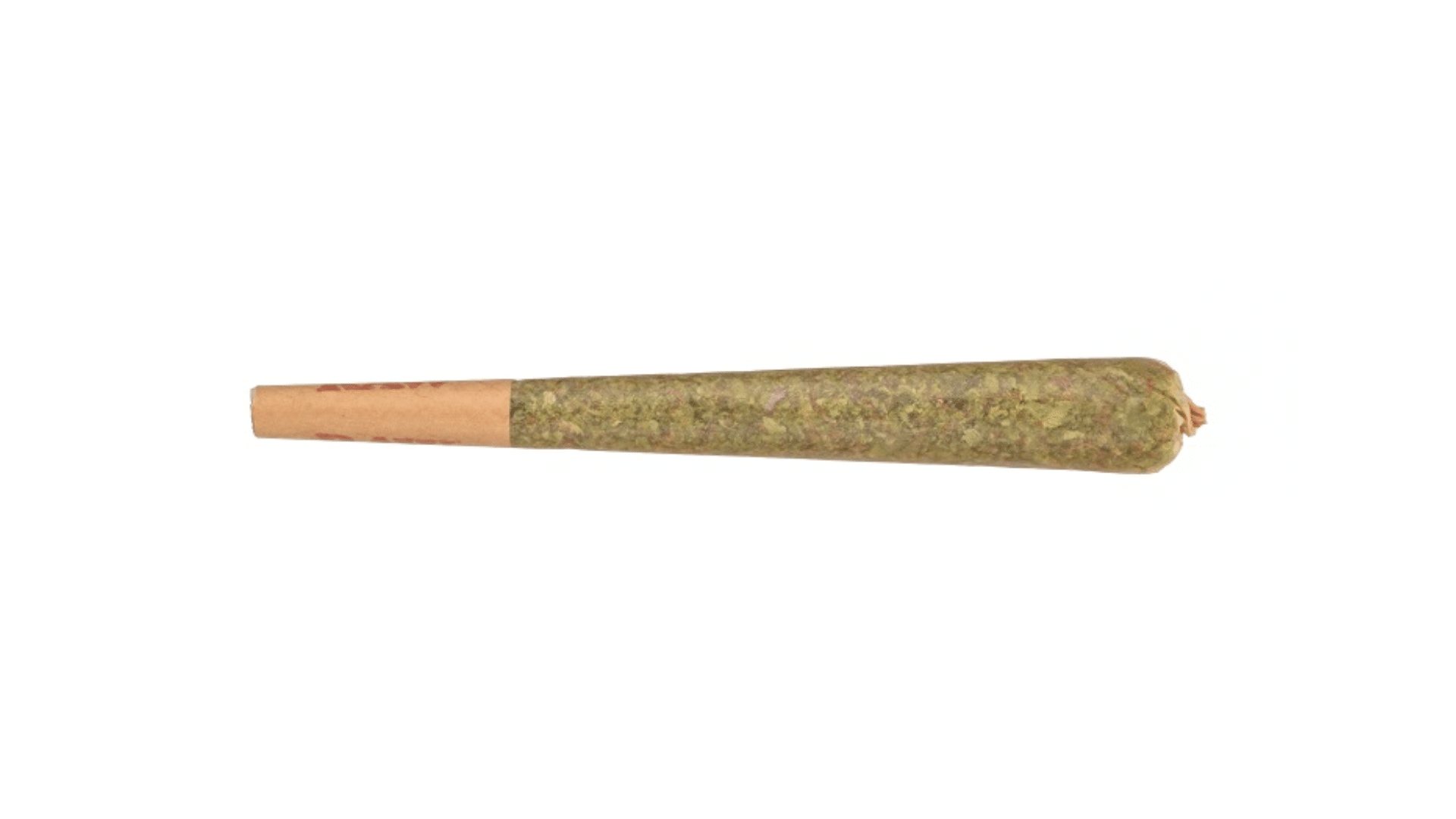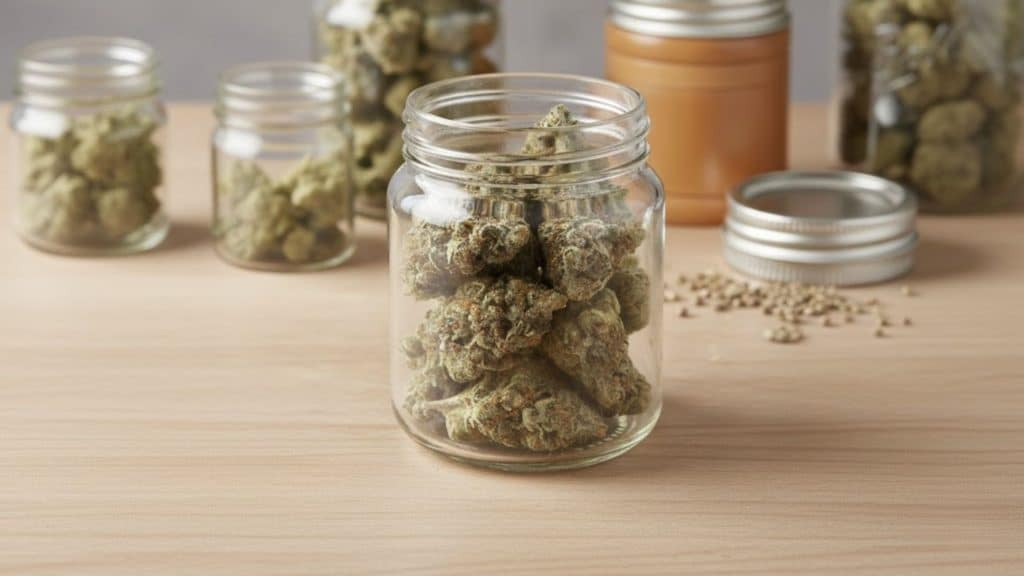I don’t smoke myself, but I’ve always been curious about the difference between a joint and a blunt. Friends often debate which is better, one swears by the clean taste of a joint, while another prefers the slow, rich burn of a blunt.
I used to think they were basically the same, but it turns out the wrap, flavor, and even burn time make a big difference.
If you’ve ever wondered what sets them apart or why people have such strong preferences, you’re in the right place.
I wanted to break it down simply so you can understand what makes each unique without any jargon. So, let’s unpack the real differences and what they mean for your experience.
This information is for education only. Everyone reacts differently to cannabis or tobacco. Start slow, know your limits, and consult a healthcare professional if you have health concerns.
The Core Difference at a Glance
This section quickly explains what separates a joint from a blunt so you understand the main difference right away.
Basics of a Joint

A joint is made by rolling finely ground cannabis flower in thin, lightweight paper made from hemp, rice, or flax. It’s designed for a clean, pure experience without any tobacco in the wrap.
Most people add a small paper tip, often called a crutch or filter, to keep the end firm and prevent bits of flower from getting in your mouth. Joints are typically small, burn quickly, and offer the natural taste of the cannabis strain you’re smoking.
Basics of a Blunt

A blunt uses the same cannabis flower but replaces the paper with a thick tobacco-leaf wrap or a hollowed-out cigar. Because the wrap itself is made from tobacco, it contains nicotine and changes both the flavor and the effects.
Blunts are larger, hold more flower, and burn more slowly than joints, giving a longer session. The tobacco wrap adds an earthy, sometimes sweet taste that many users enjoy, but it also introduces extra nicotine and smoke density into each puff.
Why This Difference Matters:
The wrap affects everything: the taste, the burn speed, and the health impact. Joints give you a cleaner, strain-focused flavor, while blunts bring a stronger aroma and a slower, nicotine-infused smoke.
Knowing this helps you choose based on your priorities, purity or richness, quick hit or long session. Now you know exactly what sets joints and blunts apart.
Materials and Build: How Each One Differs

Joints and blunts differ in how they’re built, from the type of wrap and the amount of cannabis inside to the way they’re rolled and burned.
Wrap Types Explained
Joints use thin rolling papers made from hemp, rice, or flax. These papers are lightweight and burn evenly, preserving the natural taste of the cannabis.
Blunts, on the other hand, use thick tobacco-leaf wraps or hollowed-out cigars. The tobacco leaf adds nicotine, giving a heavier flavor and a slower burn. Today, many people prefer tobacco-free hemp wraps for a smoother, cleaner option.
The type of wrap directly affects flavor, burn time, and the overall session.
Flower Quantity and Burn Duration
Joints usually hold between 0.3 and 1 gram of cannabis, depending on paper size. They burn quickly, often lasting five to fifteen minutes, making them ideal for solo or short sessions.
Blunts are thicker and can hold one to two grams or more, lasting twenty to thirty minutes. The denser wrap material slows the burn, keeping the smoke going longer.
This size difference explains why blunts are often chosen for social settings, while joints suit quicker, more personal use.
Filters, Tips, and Packing
Joints often include a paper filter or “crutch” at one end. This small tip keeps the shape firm, prevents small bits of flower from entering your mouth, and improves airflow.
Blunts rarely use filters since the thick wrap provides enough support, but they require careful rolling and tighter packing. If packed too loosely, they burn unevenly; if too tight, airflow suffers.
Proper rolling and packing ensure smoother hits, longer burns, and a more consistent experience from start to finish.
Flavor, Aroma, and Overall Experience
When it comes to taste and aroma, joints and blunts offer very different experiences.
Joints give you the pure flavor of cannabis since the thin paper doesn’t add much taste or smoke density. You can truly notice each strain’s natural notes, earthy, citrusy, or piney, without interference.
Blunts, on the other hand, bring in the distinct flavor and aroma of tobacco. The wrap adds richness and depth but can also overpower subtle strain profiles. Because the tobacco leaf contains nicotine, it can create a mild, relaxing buzz that enhances the heaviness of the session.
Many users now experiment with flavored wraps like honey, vanilla, or grape for variety, though these can mask the true cannabis taste if flavor purity matters to you.
Cultural Roots and Modern-Day Habits
The way people use joints and blunts goes beyond personal preference; it’s deeply tied to history, lifestyle, and social trends.
Joints became popular in the early 1900s as a simple, discreet way to smoke cannabis and have since become a global symbol of laid-back, everyday use. They’re often chosen for solo sessions or small, casual gatherings.
Blunts, in contrast, rose to fame in 1980s urban America, heavily influenced by hip-hop culture, where the cigar-style roll became part of the scene’s identity.
Regional styles also differ: in Europe, “spliffs” combine tobacco and cannabis, while in the U.S., pure joints and blunts are more common.
Each style reflects how people connect, whether through quick solo smokes or longer, shared rituals among friends.
Step-by-Step Rolling Tips for Both
Here’s a simple guide on how to roll joints and blunts properly so you get a smooth, even, and enjoyable smoke every time.
Rolling a Joint
Follow these steps to roll a clean, evenly burning joint that gives you the best flavor and airflow.
- Grind the cannabis evenly: fine but not powdery for smooth packing.
- Prepare the paper: use hemp, rice, or flax papers for a clean burn.
- Add a filter (crutch): makes the joint sturdy and keeps bits out of your mouth.
- Fill and shape: spread cannabis evenly and pinch the paper into a cylinder.
- Roll and seal: tuck the edge, lick the glue strip, and smooth it down.
- Twist the tip: seals the end and prevents spillage.
- Light evenly: rotate as you light to avoid uneven burning.
Rolling a Blunt
Rolling a blunt takes a bit more care because the wrap is thicker and more delicate than paper.
- Split or empty a cigar: carefully remove the tobacco to keep the wrap intact.
- Moisten the wrap slightly: it prevents cracking and helps it roll smoothly.
- Grind and fill: Use 1–2 grams of cannabis for a firm but flexible roll.
- Shape and roll: fold the wrap evenly and tuck tightly for consistent airflow.
- Seal with moisture: press edges gently until fully closed.
- Toast the edges: lightly heat with a lighter to dry the seal and strengthen it.
- Burn-management tips: rotate while lighting to prevent “canoeing” (uneven burn); puff gently to keep it consistent.
Complete Comparison: Joints, Blunts, and Spliffs
Here’s an all-in-one look at how joints, blunts, and spliffs differ in build, burn, flavor, and overall experience, so you can choose what fits you best.
| Feature | Joints | Blunts | Spliffs |
|---|---|---|---|
| Wrap Material | Thin paper (non-tobacco, hemp, rice, or flax) | Tobacco or cigar leaf | Thin paper (usually hemp or rice) |
| Tobacco/Nicotine | None | Present in a wrap | Mixed with cannabis inside |
| Typical Size | ~0.3–1 g | ~1–2 g+ | ~0.5–1 g |
| Burn Time | Shorter, faster | Longer, slower | Moderate |
| Flavor | Pure cannabis taste | Added tobacco flavor | Mild mix of cannabis and tobacco |
| Health Risk | Lower | Higher (nicotine exposure) | Moderate (some tobacco) |
| Pros | Clean, natural taste; easy to roll; no nicotine. | Slow burn; longer sessions; rich, heavy smoke. | Smooth hit; balanced high; steady burn. |
| Cons | Burns quickly; short session. | Contains nicotine; harder to roll evenly. | Includes tobacco; less pure flavor. |
| Best For | Solo use, flavor testing, light sessions. | Group sessions; heavier, longer smokes. | Users who enjoy both cannabis and tobacco together. |
Modern Trends and Legal Notes
The cannabis industry continues to evolve, and recent trends show a clear move toward cleaner, more regulated smoking options.
Tobacco-free blunt wraps made from hemp, palm, or banana leaves are becoming increasingly popular among users seeking nicotine-free alternatives. However, research shows that even these products can create confusion in labeling and regulation.
The study “Putting the ‘Tobacco’ in Tobacco-Free Blunt Wraps: Early Evidence From Adolescents Who Use Cannabis Blunts” (published in Nicotine & Tobacco Research, Oxford Academic, 2023) highlights that many so-called “tobacco-free” wraps still fall into unclear legal categories.
Similarly, a paper in Tobacco Control (BMJ, 2022) discusses growing restrictions on flavored wraps due to youth appeal.
Meanwhile, dispensaries are promoting cleaner pre-rolls and exploring sustainable materials, as hemp-based production is considered more eco-friendly than traditional cigar manufacturing.
Final Thoughts
Now that we’ve looked at the difference between a joint and a blunt, it’s clear they’re not as similar as people often think.
The type of wrap changes everything, from flavor and nicotine content to how long your session lasts. I might not smoke, but understanding both helped me see how small details can completely change the experience.
If you care about purity, taste, or burn time, it’s all about what feels right for you. The key is knowing your options and making choices that suit your comfort and lifestyle.
I’d love to hear your take. What do you think defines the better smoke? Keep reading my other blogs for more easy, down-to-earth breakdowns like this.








